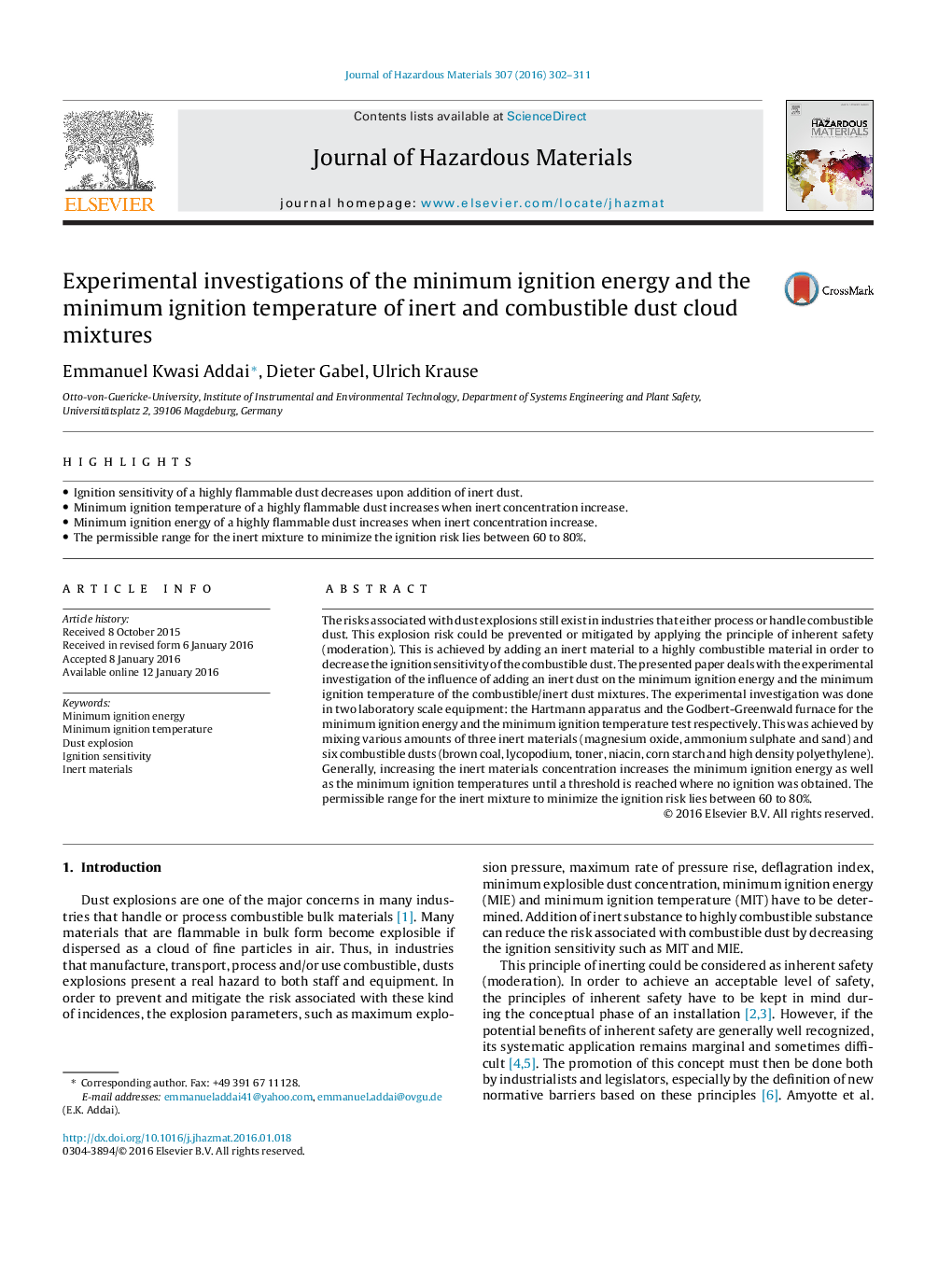| Article ID | Journal | Published Year | Pages | File Type |
|---|---|---|---|---|
| 6970729 | Journal of Hazardous Materials | 2016 | 10 Pages |
Abstract
The risks associated with dust explosions still exist in industries that either process or handle combustible dust. This explosion risk could be prevented or mitigated by applying the principle of inherent safety (moderation). This is achieved by adding an inert material to a highly combustible material in order to decrease the ignition sensitivity of the combustible dust. The presented paper deals with the experimental investigation of the influence of adding an inert dust on the minimum ignition energy and the minimum ignition temperature of the combustible/inert dust mixtures. The experimental investigation was done in two laboratory scale equipment: the Hartmann apparatus and the Godbert-Greenwald furnace for the minimum ignition energy and the minimum ignition temperature test respectively. This was achieved by mixing various amounts of three inert materials (magnesium oxide, ammonium sulphate and sand) and six combustible dusts (brown coal, lycopodium, toner, niacin, corn starch and high density polyethylene). Generally, increasing the inert materials concentration increases the minimum ignition energy as well as the minimum ignition temperatures until a threshold is reached where no ignition was obtained. The permissible range for the inert mixture to minimize the ignition risk lies between 60 to 80%.
Keywords
Related Topics
Physical Sciences and Engineering
Chemical Engineering
Chemical Health and Safety
Authors
Emmanuel Kwasi Addai, Dieter Gabel, Ulrich Krause,
